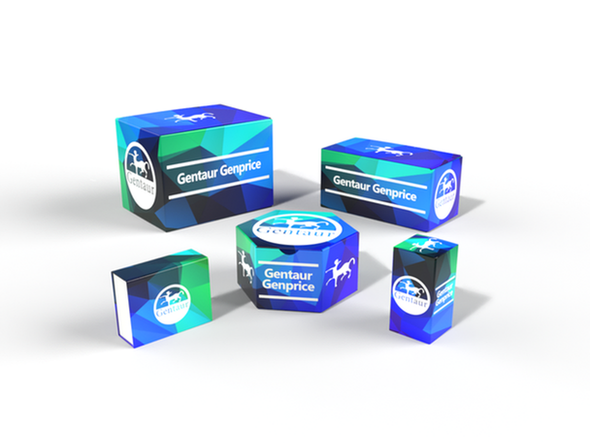Description
MIG Antibody (biotin) | XP-5231Bt | Gentaur UK, US & Europe Distribution
Host: Rabbit
Reactivity: Human
Homology: N/A
Immunogen: Produced from sera of rabbits pre-immunized with highly pure (>98%) recombinant hMIG (human MIG) .
Research Area: Chemokines & Cytokines, Signal Transduction, Homeostasis, Antibody Pairs
Tested Application: E, WB
Application: ELISA:
Sandwich:
To detect hMIG by sandwich ELISA (using 100 μL/well antibody solution) a concentration of 0.25 - 1.0 μg/mL of this antibody is required. This biotinylated polyclonal antibody, in conjunction with our Polyclonal Anti-Human MIG (XP-5231) as a capture antibody, allows the detection of at least 0.2 - 0.4 ng/well of recombinant hMIG.
Western Blot:
To detect hMIG by Western Blot analysis this antibody can be used at a concentration of 0.1 - 0.2 μg/mL. Used in conjunction with compatible secondary reagents the detection limit for recombinant hMIG is 1.5 - 3.0 ng/lane, under either reducing or non-reducing conditions.
Specificiy: N/A
Positive Control 1: N/A
Positive Control 2: N/A
Positive Control 3: N/A
Positive Control 4: N/A
Positive Control 5: N/A
Positive Control 6: N/A
Molecular Weight: N/A
Validation: N/A
Isoform: N/A
Purification: Anti-hMIG specific antibody was purified by affinity chromatography and then biotinylated.
Clonality: Polyclonal
Clone: N/A
Isotype: N/A
Conjugate: Biotin
Physical State: Lyophilized
Buffer: N/A
Concentration: N/A
Storage Condition: MIG antibody is stable for at least 2 years from date of receipt at -20˚C. The reconstituted antibody is stable for at least two weeks at 2-8˚C. Frozen aliquots are stable for at least 6 months when stored at -20˚C. Avoid repeated freeze-thaw cycles.
Alternate Name: CMK, MIG, Humig, SCYB9, crg-10, CMK, C-X-C motif chemokine 9, Gamma-interferon-induced monokine, HuMIG
User Note: Centrifuge vial prior to opening.
BACKGROUND: MIG, a member of the alpha-chemokine family (CXC) of cytokines, is produced by stimulated monocytes, macrophages and endothelial cells. It signals through the CXCR3 receptor.



![MIG Antibody [1.1_2D3-2H3] MIG Antibody [1.1_2D3-2H3]](https://cdn11.bigcommerce.com/s-1rdwiq712m/images/stencil/590x590/products/463623/469452/gentaur-genprice__26005.1661610467__29809.1661628092__75433.1661676199__77988.1661684280__64362.1661692443__02085.1662049603__45075.1662119302__91744.1662191540__21580.1662291419__78564.1663495266.png?c=1)






